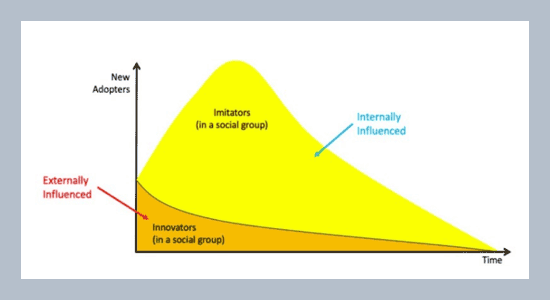Josie B. Quiban* Department of Information Technology, Palompon Institute of Technology, Leyte, Philippines
Download Citation:
|
Download PDF
This paper examines the rate of Internet diffusion among the Association of Southeast Asian Nations (ASEAN) nations during 2001-2018. This study utilizes the International Telecommunication Union (ITU) 2001-2018 dataset. The bass model was used to estimate and forecast the Internet potential adopters, innovators, and imitators in determining the rate and patterns of internet diffusion and adoption across ASEAN countries. The results showed that the Internet diffusion rate among ASEAN countries is well characterized by an S-shape curve. The predicted diffusion curves provide evidence that high-income countries have higher diffusion rates comparing the upper-middle and lower-income countries in the ASEAN. The forecast results show that the country with the highest inflection point is also the country that becomes the least in the Internet diffusion and adoption process. The results also indicate that among ASEAN countries, four have reached their peak of adoption before 2018, two have reached their saturation point, and one is continuously dominating since the introduction of the Internet.ABSTRACT
Keywords:
ASEAN, Bass model, Internet adoption, Internet adoption rate, S-shaped curve.
Share this article with your colleagues
REFERENCES
ARTICLE INFORMATION
Received:
2021-01-29
Revised:
2021-04-05
Accepted:
2021-05-11
Available Online:
2021-06-21
Quiban, J.B. 2021. Rate of internet diffusion among ASEAN countries using bass model.International Journal of Applied Science and Engineering, 18, 2021035. https://doi.org/10.6703/IJASE.202106_18(4).002
Cite this article:
Copyright The Author(s). This is an open access article distributed under the terms of the Creative Commons Attribution License (CC BY 4.0), which permits unrestricted use, distribution, and reproduction in any medium, provided the original author and source are cited.






